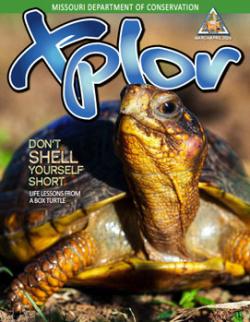Body
Kansas City, Mo. – Conditions vary this autumn at the Missouri Department of Conservation’s (MDC) wetlands. Some conservation areas with wetlands managed for waterfowl have ample water and good access for hunters. Some areas, however, have infrastructure issues or low water from a dry autumn. Waterfowl hunters will want to visit the web site for each area to verify changes and procedures in place for COVID-19 precautions or due to unfinished construction projects.
A dry autumn is causing low water conditions at some wetlands in northwest and west central Missouri. Autumn rains, however, can quickly improve wetland conditions, especially those with good growth of natural waterfowl foods through the summer. Scouting wetland conditions ahead of the season or before making a hunting trip can boost success.
Missouri’s North Zone ducking hunting season opens Nov. 7 and ends Jan. 5. The Middle Zone will have a split season, Nov. 7-13, and Nov. 19 through Jan. 10.
Here’s a look at wetland conditions as of mid-October.
- Habitat conditions at MDC’s Grand Pass Conservation Area are very good, said Chris Freeman, MDC regional resource management district supervisor. Moist soil food plant production and wetland habitat is excellent to very good. Agricultural crops are very good. Water levels will be normal.
- The Fountain Grove Conservation Area has excellent to very good habitat. Agriculture crops are fair. Construction on a new pump station and problems with an old pump might hamper water levels until the old pump is repaired. Water management on the area’s east side is expected to be on schedule and favorable. Crop harvest progress will determine when units on the east side will receive water.
- An average waterfowl season is expected at the Nodaway Valley Conservation Area based on waterfowl food quality, said Craig Crisler, MDC wildlife management biologist. Wetland conditions and water levels are normal for early autumn, but weather conditions could help or hurt habitat. The draw for hunting positions will be conducted according to the new COVID-19 precautions.
- MDC’s Bob Brown Conservation Area suffered flood damage in 2019. There is no water on the area currently and Crisler does not expect conditions to improve this fall. Hunting will be allowed on the area via a self-check system.
- At the Four Rivers Conservation Area, natural habitat is good to excellent in Unit 1 and Unit 2, the draw units. Crops are fair, hampered by a wet spring causing a late planting followed by a dry summer, said Chris Daniel, MDC district supervisor. Water levels in Unit 1 may be limited as low river conditions will restrict pumping. That could limit hunting positions. Water conditions could be normal in Unit 2 at Four Rivers because MDC can still pump water into that unit.
- Units 3 and 4 at Four Rivers, the open units, are currently dry. Those units suffered flood damage in 2019. They are now functional, but they will need significant rains or a river rise to provide waterfowl habitat.
- Wetlands at MDC’s Schell-Osage Conservation Area were drained for a major renovation project that is ongoing. Preliminary brush clearing for the project is now complete. All hunting and refuge zones at the area will be in effect. The Waterfowl Hunting Only zones will be open through self-registration. Water will be held in wetlands if the area receives significant rains or a rise in the Osage River and Truman Lake.
- Both water levels and waterfowl food are fair to good in wetlands at the Ralph and Martha Perry Memorial Conservation Area, said Joe Coy, MDC wildlife management biologist. Pools are 70 percent full of water. Levee conditions are adequate.
- Natural habitat is poor at MDC’s Settle’s Ford Conservation Area. Late summer flooding caused delays in wetland work, said Brian Bokern, MDC wildlife biologist. Most pools are dry, including the waterfowl refuge pool. The area does not have the ability to pump water. Significant rainfall is needed to fill wetland pools. Hunting opportunities will be limited. Hunters will use self-registration. There is water in the pool with a blind open for use by hunters with accessibility issues. Hunters wanting to use that blind must register, and the blind is available on a first come, first serve basis.
- At MDC’s Montrose Conservation Area, natural vegetation is excellent but water levels are a concern. Waterfowl hunting centers on the area’s Montrose Lake. Lake levels have dropped due to dry conditions. The lake needs significant rainfall or hunting opportunities will be reduced. Currently, conditions are dry at all hunting blinds on the west end of the lake, and access to all blinds will be difficult if dry weather persists.
For more information on waterfowl hunting in Missouri, visit https://short.mdc.mo.gov/ZQg. MDC has altered waterfowl hunting blind allocations to adjust for COVID-19 safety precautions. For updates on blind draws or reservations, visit https://short.mdc.mo.gov/Z4W.




































